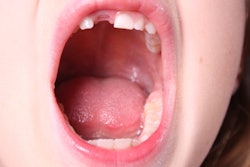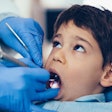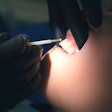Early changes in children’s saliva biochemistry may be linked to enamel development issues, like hypomineralized second primary molars (HSPM) or molar incisor hypomineralization (MIH). This study was recently published in the Journal of Dentistry.
Additionally, children with HSPM or MIH may be more likely to have a history of prolonged labor and fever in their first year of life, the authors wrote.
“HSPM and MIH are enamel formation defects associated with preliminary alterations in salivary biochemical parameters,” wrote the authors, led by Haylla de Faria Horta of the São Paulo State University School of Dentistry in Brazil (J Dent, November 13, 2025, 106230).
The study included 45 children ages 2 to 11 who were divided into three groups, including the control, HSPM, and MIH groups. Parents or guardians completed an 11-item questionnaire providing general information about each child. The questionnaire gathered details on systemic conditions during pregnancy and the first three years of life, they wrote.
Factors such as respiratory illnesses, premature birth, birthweight, fever, medication use, and breastfeeding were included. Saliva samples were also collected and tested for flow rate, pH, buffering capacity, minerals, proteins, enzyme activity, oxidative markers, and uric acid.
Children with MIH or HSPM had salivary flow rates, pH levels, and buffering capacities similar to the control group. Calcium levels were higher in the MIH group than in the HSPM group (p < 0.05), while phosphate levels were lower in MIH compared to controls (p < 0.05), they wrote.
Furthermore, fluoride levels did not differ between groups. The HSPM group showed significantly lower total salivary protein concentrations than the control group (p < 0.01). Children with MIH were older on average (p < 0.05), and prolonged labor was reported more often in the HSPM group.
The study, however, had limitations. The retrospective questionnaire depended on parents’ memories, which may have introduced recall or observation bias, the authors added.
“These findings provide early evidence that salivary biomarkers may reflect underlying changes in enamel hypomineralization, supporting future research aimed at improving diagnosis, monitoring, and preventive care in affected children,” they concluded.




















